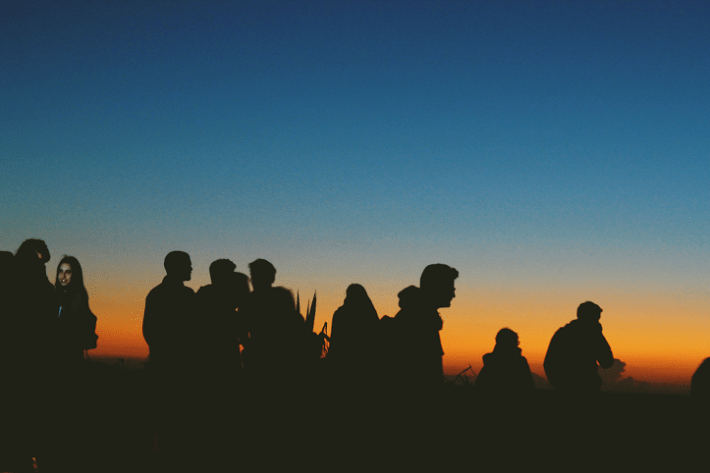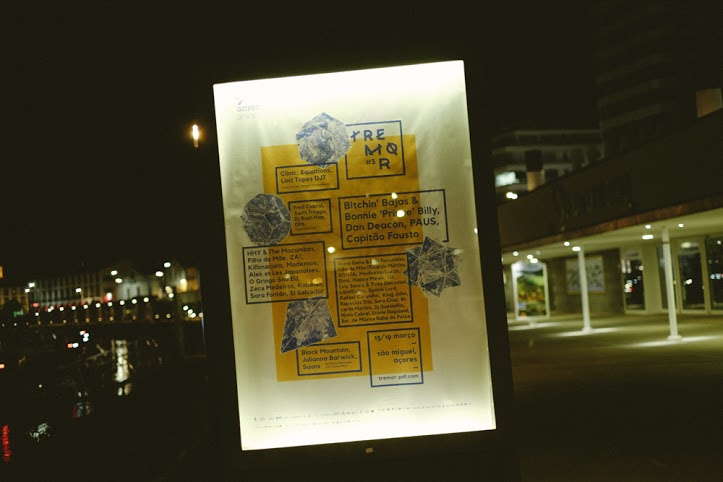Now in its third year, the Tremor festival takes place on the island of São Miguel in the Azores -- a place that, quite frankly, I didn't even know existed until I was asked to go there. Located in the middle of the North Atlantic Ocean, the Azores is a Portuguese archipelago -- approximately halfway between Lisbon and New York City -- though most Portuguese people I know have never even been there. Up until a year ago the nine islands that make up the Azores were only serviced by one airline, which made getting to and from the islands prohibitively expensive. Now that the island is serviced by multiple carriers, it's easy -- and relatively cheap -- to fly there. Just a four and a half hour flight from Boston, Azores is like this crazy volcanic paradise that you never knew you wanted to visit and that you basically never want to leave.

As a festival, Tremor functions like a kind of mini SXSW -- multiple shows, film screenings, and art-related multimedia events spread across four days in the historic center of Ponta Delgada (the largest city on the island), all happening more or less simultaneously at a variety of different venues. Instead of competing label showcases and/or corporate-sponsored swag explosions, Tremor offers carefully curated bills and an assortment of bands both well known and deep underground. The artists are refreshingly eclectic -- a handful of bigger acts from the US and the UK, mixed in with a variety of Portuguese and Azorean acts (Azorean rap? It exists!) -- but the lineup itself hardly matters. The island itself -- and the chance to see a bizarro variety of music in a bunch of beautiful settings -- is the real draw here. Attending a festival in a beautiful and relatively tiny city where it's also possible to also do some casual whale watching, drive around some volcanic lakes, swim in hot springs that look as if they are situated somewhere squarely in the middle of Jurassic Park, and climb to the top of an abandoned hotel at the island's peak for a pant-shitting view of giant volcanic lakes ... well, it's both amazing and surreal. It also makes the festival experience as we've come to know it here in the States -- a relative hellscape of fenced-in fields, corporately branded megastages, and crowd control designed to make you feel like the human equivalent of drunk cattle -- look really gross.

The first three nights of Tremor were dominated by secret shows, which meant showing up at a specific spot and being hustled off to an unknown location to see an unannounced mystery act. One night entailed seeing a Scottish duo called Happy Meals play outside of a natural hot springs as around 100 or so festival goers, drinks in hand, splashed around in the steamy waters while, just a few feet away, giant waves crashed massive volcanic rocks. The other secret show I attended involved being dropped off inside an indoor skate park to see a Portuguese psych metal band called Kilimanjaro rip through a set of Ty Segall-esque stoner rock while kids on skateboards (as in, actual little kids) zipped and flipped through the crowd.
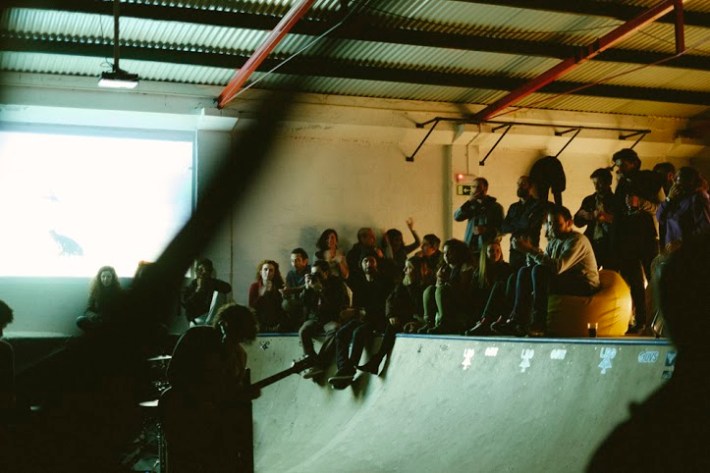
Most of the big shows happened on Saturday, the final day of the festival. Starting in the morning, you could attend a "Mini Tremor" in which bands like Alek & Les Japonaises played sets for children. In the late afternoon I wandered into an ancient church to see classical guitarist Rafael Carvalho play an intensely beautiful set. A native of the Azores, Carvalho plays a traditional Viola da Terra -- a kind of small, 12-string guitar that is specific to the islands. Seeing someone play a traditional instrument in one of São Miguel's oldest buildings (built in 1592) was itself worth the journey, the kind of thing that you quite literally can't see anywhere else. Afterwards, I spotted Will Oldham checking out Carvalho's CDs saying that not only had he never seen anyone play an instrument that way before, Carvalho was playing an instrument that he had literally never seen before in person.
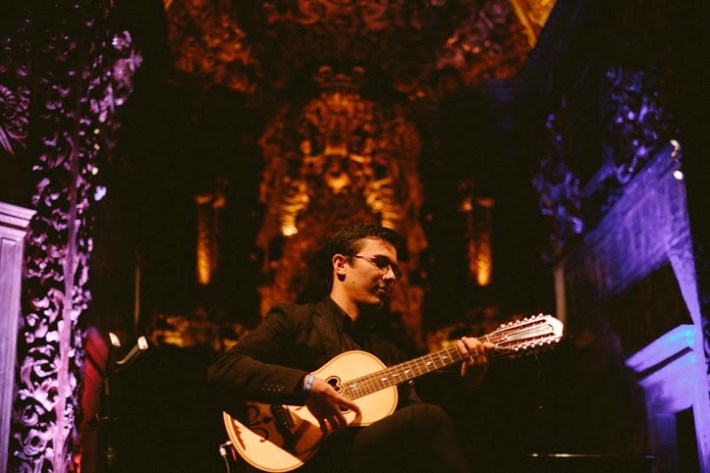
Later in the evening I watched Julianna Barwick play songs from her forthcoming record, Will, inside a venue that also doubled as some kind of medieval Swiss chalet-inspired theme restaurant. Playing in the middle of the room, Barwick's beautiful set was made all the more dreamlike by the very sweet teary-eyed kids who were planted in front of the tiny stage and the Lynchian addition of a hippie mom who spent almost the entire set tossing her giggling toddler into the air (literally) and dancing around to Barwick's ethereal songs as if they were the most beautiful things she'd ever heard. And maybe they were. The spell was quickly broken however (in the best way possible) half an hour later when Canada's Black Mountain took over and basically destroyed the room (and my eardrums) with a set that made the venue's giant iron chandeliers swing back and forth. Go see them when they come to your town. Also, their forthcoming record, IV, is out next week and it's fucking great. Just saying.

Though there was plenty of amazing stuff to see well into the wee hours -- Lisbon's double-drumming PAUS were a standout, as was seemingly omnipresent Dan Deacon, who played to a very drunk crowd at around 4am -- my favorite set of the night was from Bonnie 'Prince' Billy and Chicago's Bitchin' Bajas. Playing in a small seated auditorium that looked as if it were built at some point in the late '70s (lots of geometric patterns, earth tones, and warm wood), Billy and the Bajas wove their way through a big chunk of Epic Jammers And Fortunate Little Ditties, their newly released collaborative album. The set hewed closely to the record's improvisational spirit -- a mantra-like mix of loops, guitars, horns, and Oldham's sonorous, yelping voice. As the band played "You Will Soon Discover How Truly Fortunate You Really Are" -- a song built around the repetition of that single phrase -- I couldn't help but look around the room and wonder if I was the only one feeling profoundly moved by those words and the glow-y vibe of the room. I felt lucky to be there -- on an island in the middle of the Atlantic watching Will Oldham sing songs about wellness and family and gratitude. It's a feeling I don't ever remember having at Coachella.
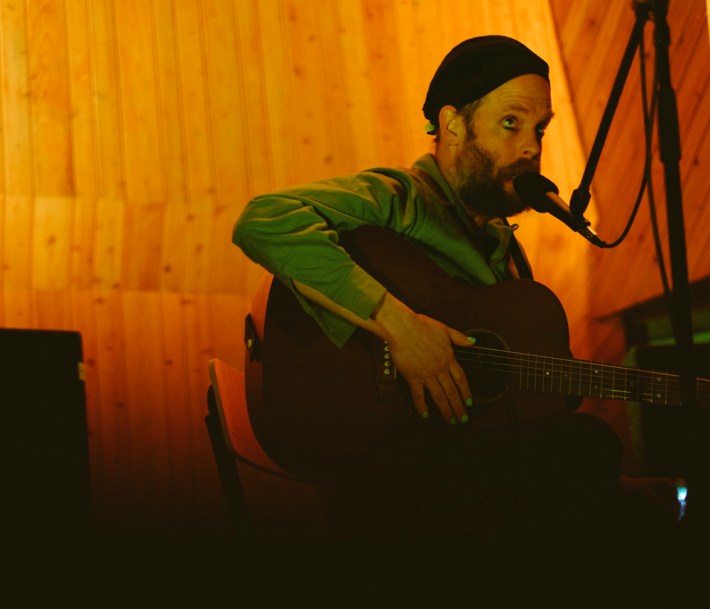
I hated to leave São Miguel, a place so beautiful and unassuming that I felt as if I could have easily stayed for another week or so, just wandering around and blissing out while looking at waterfalls and eating mysterious seafood. I saw lots of good music, but never felt particularly stressed about missing out on anything. At a time when lots of press outlets have had their fill of reporting on (and attending) the now nearly identical and ubiquitous super festivals in the States, the experience of attending a festival like Tremor felt all the more special, mostly because it's an actual experience -- something that offers not only the chance to see some bands you know and love, but also the increasingly rare opportunity to maybe discover something new and weird and beautiful.
